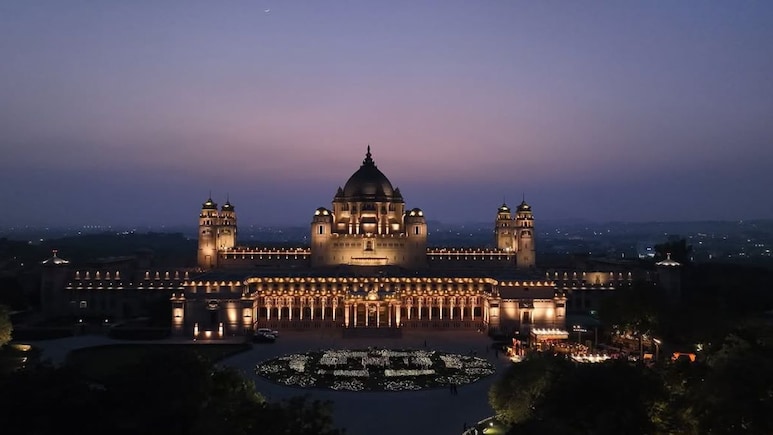
Atop the sun-soaked Chittar Hill in Rajasthan's Jodhpur stands the Umaid Bhawan Palace, a sandstone marvel that glows in the desert light.
Completed in 1943, this Art Deco masterpiece is not just one of the world's largest private residences but also one of India's most poignant stories of royal philanthropy.
Built during one of the harshest famines in the history of Marwar, the palace, nearly a century later, still remains home to the Jodhpur royal family and stands as a symbol of grandeur, royalty and reinvention.
A Famine Curse
Local legend attributes the very birth of Umaid Bhawan Palace to a saint's prophecy that Jodhpur would face a long period of drought once its good rule ended. True to the lore, the 1920s brought three consecutive years of famine that devastated Marwar. Thousands of farmers lost their livelihoods, and the desert kingdom's survival hung in balance.
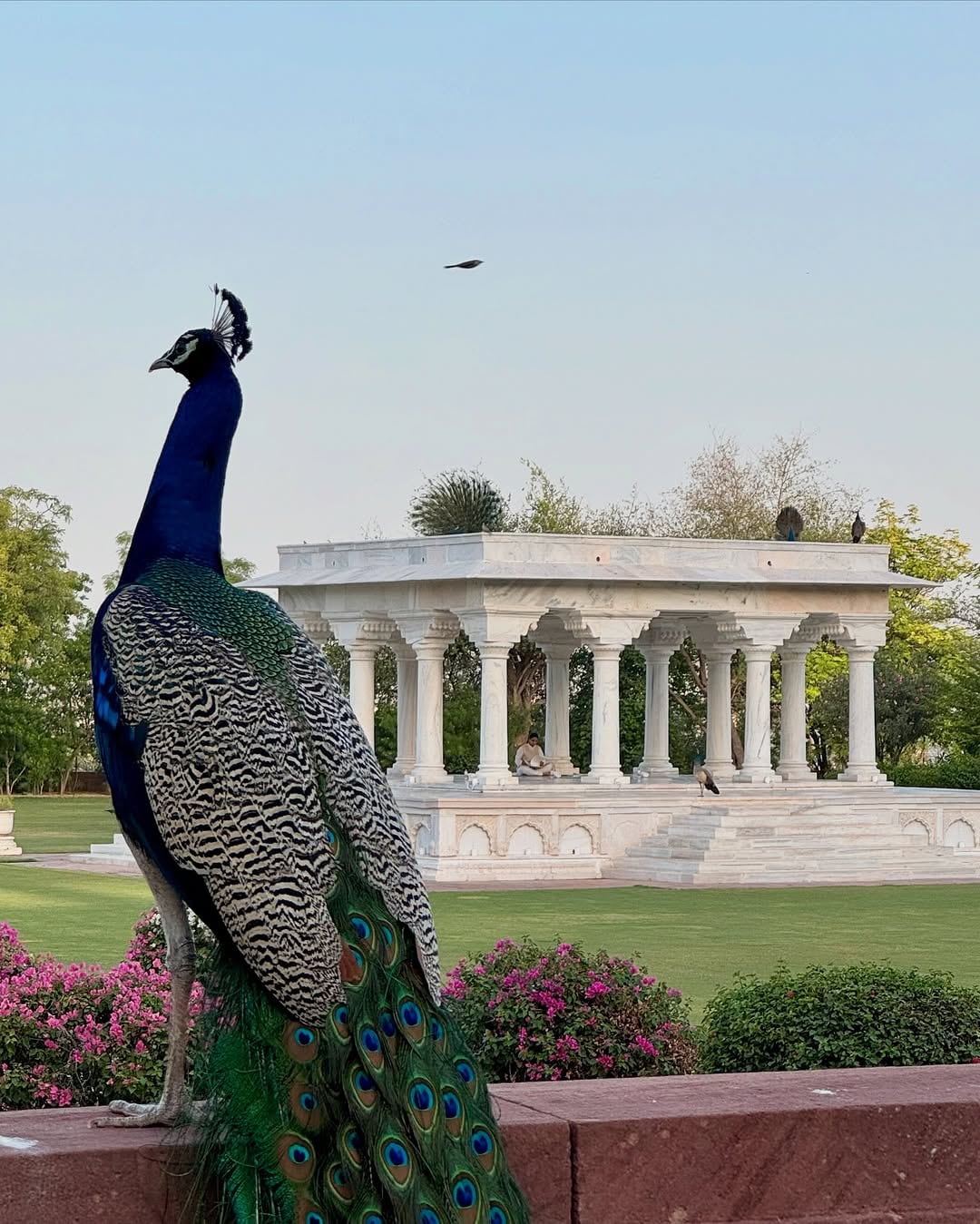
Umaid Bhawan's design was entrusted to British architect Henry Vaughan Lanchester. Photo: Instagram
Instead of turning away, Maharaja Umaid Singh chose to act. He commissioned the palace in 1929 not as a symbol of power, but as a massive public works project to provide employment. Between 2,000 and 3,000 men worked on the site for over a decade, carving, transporting, and setting stones under the scorching sun.
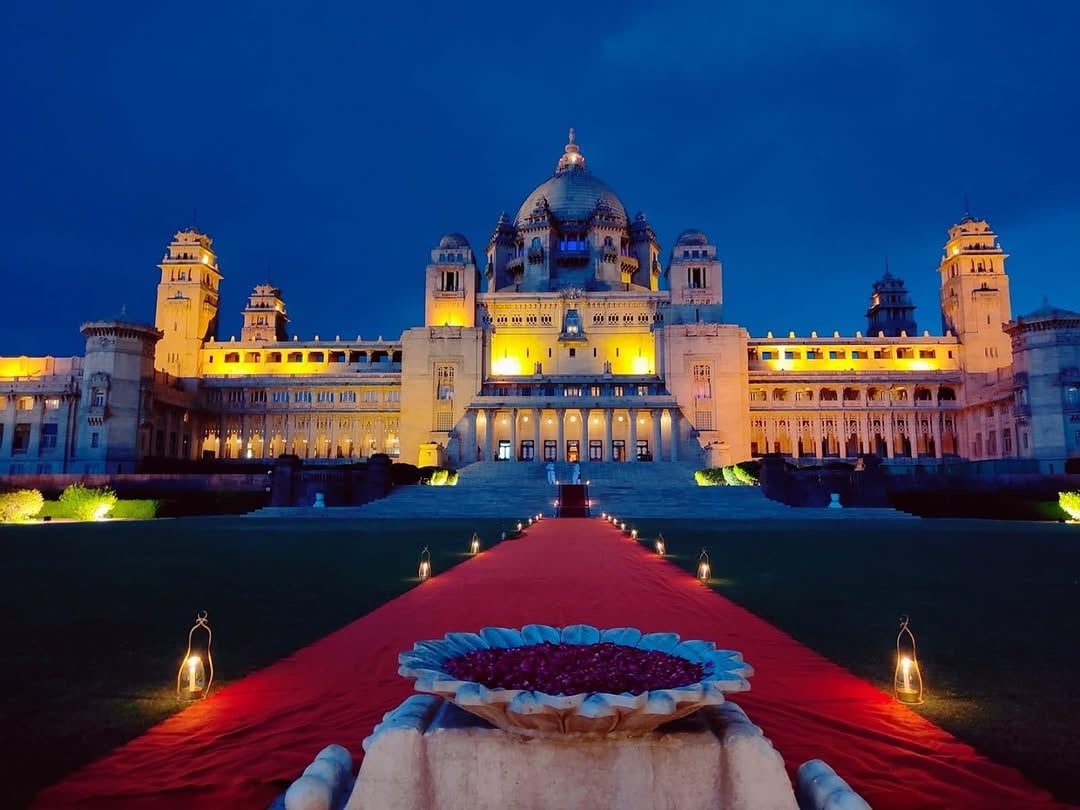
Local legend attributes the very birth of Umaid Bhawan Palace to a saint's prophecy. Photo: Instagram
"Jodhpur had a massive drought in the 20s, and at that time Maharaja Umaid Singh was the ruler. When he wanted to give money to all the sectors where he thought financial help was needed, the people themselves said they don't want charity. 'Give us work and pay for it,' they said, and that is the main reason the palace was built," Shova Kanwar, Jodhpur's royal family historian said in an interview in 2001.
How Umaid Bhawan Palace Was Built
On November 18, 1929, construction began atop Chittar Hill, a rugged plateau that offered panoramic views of Jodhpur.
The site itself was a logistical nightmare: no water nearby, no road access, and no ready stone. To transport the distinctive golden sandstone from distant quarries, a small railway line was built to the hill.
The design was entrusted to British architect Henry Vaughan Lanchester, who blended Rajput and Western aesthetics into what became one of India's finest examples of Indo-Deco architecture.
The palace combined Chittar sandstone exteriors with Makrana marble interiors, Burmese teak, and lavish Art Deco detailing.
Inside, the scale is staggering - 347 rooms, soaring domes, marble staircases, and halls lined with murals by Polish artist JS Norblin. The 103-foot central dome still dominates the Jodhpur skyline. When completed in 1943 at a cost of roughly Rs 1.1 crore, Umaid Bhawan stood as one of the last great palaces built in India before Independence.
One Of The World's Largest Private Homes
Even today, Umaid Bhawan remains among the largest inhabited residences in the world, sprawling across 26 acres of manicured gardens. It is part museum, part royal home, and part luxury hotel.
Today, 70 of the 347 rooms are managed by the Taj Hotels group.
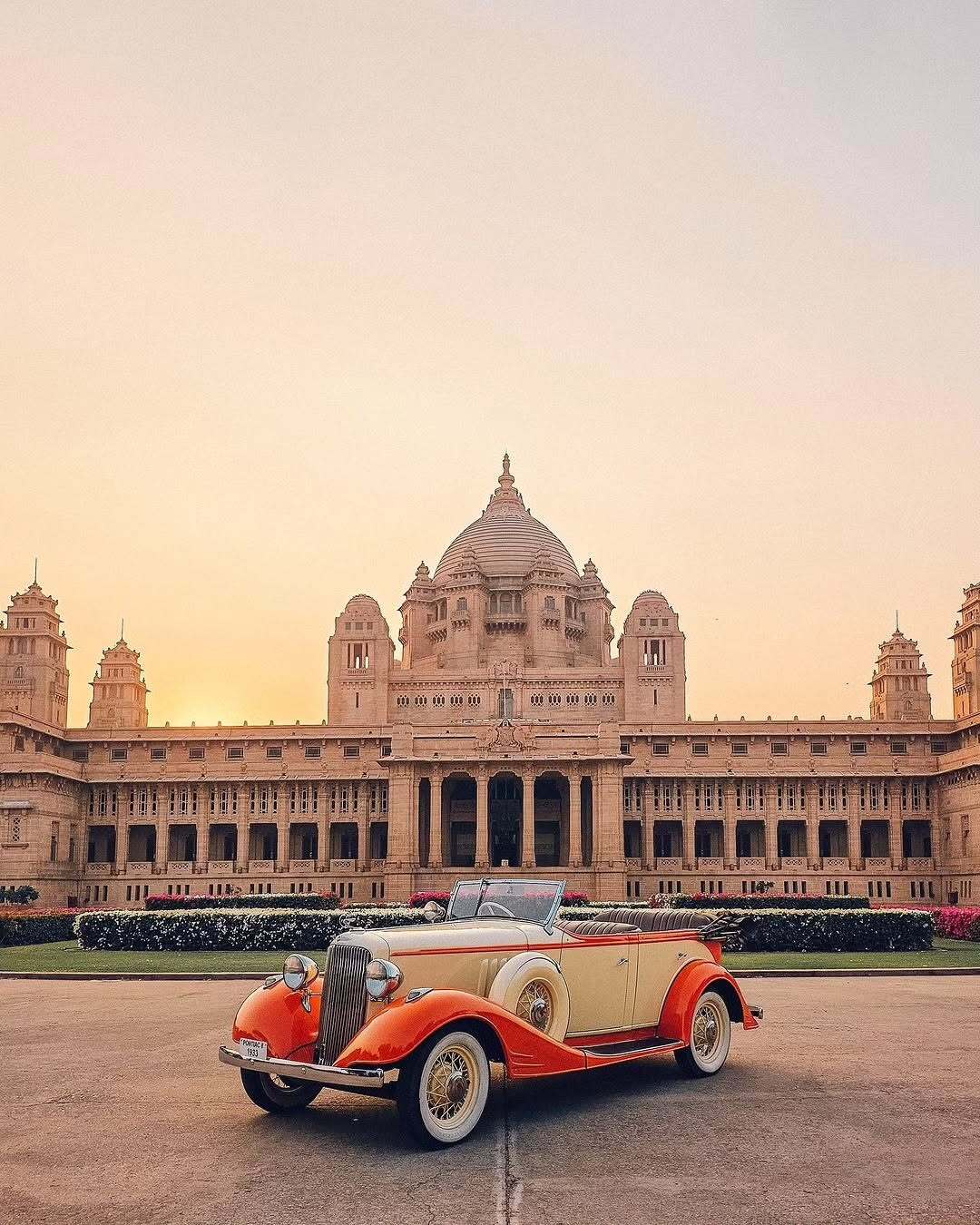
The palace combined Chittar sandstone exteriors with Makrana marble interiors. Photo: Instagram
Its architectural language is a fusion of influences, Rajput-Saracenic arches, Classical Revival columns, and Art Deco geometry. The interiors, preserved in near-original condition, remain textbook 1930s modern luxury - sleek lines, chrome fittings, geometric floors, and rich handcrafted detailing. Every hall and corridor seems to whisper stories of a bygone era.
The Jodhpur Royal Family And Their Legacy
Maharaja Umaid Singh died in 1947, not long after his dream palace was completed. His son, Hanwant Singh, died tragically in a plane crash in 1952, leaving behind a young heir - Gaj Singh II, who would later take the reins of Jodhpur in a very different India.
Educated at Eton and Christ Church, Oxford, Gaj Singh returned to Jodhpur in 1970-71, just as the 26th Amendment of 1971 abolished royal titles and privy purses.
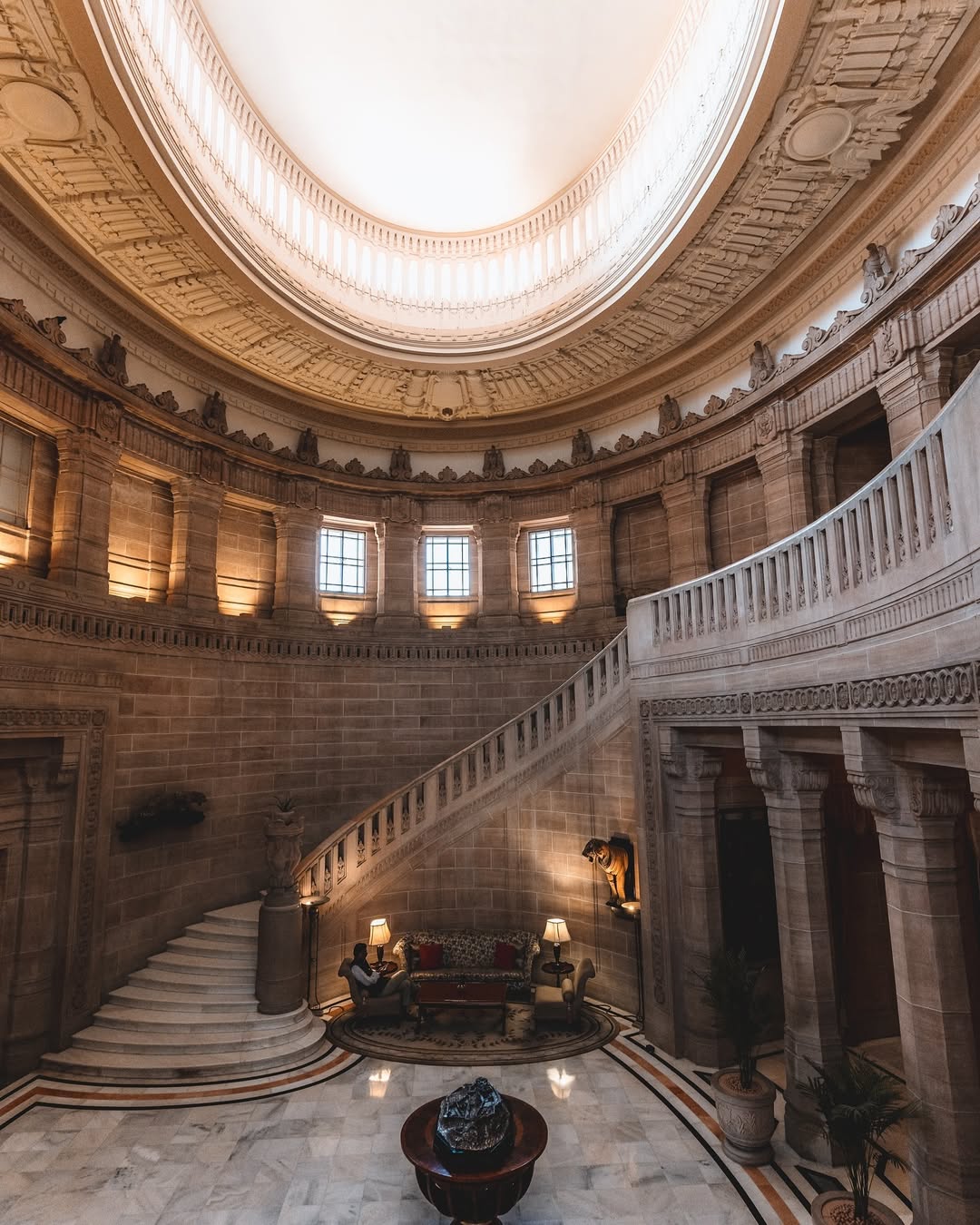
Today, Umaid Bhawan Palace is valued at around Rs 22,400 crore. Photo: Instagram
The new laws stripped India's royals of their official privileges, forcing them to rethink how to sustain their vast estates.
Gaj Singh was determined not to let Umaid Bhawan fall into decay. He took on the challenge of preserving his family's heritage while ensuring it remained relevant in modern India.
From Royal Residence To A Taj Palace Hotel
In the late 1970s, Gaj Singh made a pivotal decision - to open part of the palace to the public. The idea was simple: to convert a section of Umaid Bhawan into a luxury hotel while keeping the royal family's residence private.
This adaptive reuse not only brought in funds for maintenance but also gave the palace a renewed lease of life as a living heritage space.
The Taj Group later came on board to manage the hotel wing, incorporating Umaid Bhawan into its portfolio of grand palace hotels across Rajasthan. The Taj preserved the original Art Deco interiors, maintaining suites, dining halls, and public rooms much as they were in the 1940s. Guests today dine beneath crystal chandeliers, walk down marble corridors, and wake up to views once reserved for royalty.
Scale, Ambition, And The Cost
Spanning 14 years of construction from 1929 to 1943, Umaid Bhawan was built on a scale unmatched for its time. Its cost, Rs 1.1 crore then, would today translate into thousands of crores. The purpose, however, according to historians, was never mere grandeur. The palace was a lifeline for Marwar's people during the famine years, a philanthropic endeavour that provided both sustenance and dignity.
Today's Stature And Value
Today, Umaid Bhawan Palace is valued at around Rs 22,400 crore. The property is divided into three parts: the royal family's private residence, the Taj-operated luxury hotel, and a museum showcasing artefacts from Jodhpur's royal history, including vintage cars and heirlooms.
The hotel is among the world's most sought-after and most expensive wedding destinations - it has a starry retinue to back the claim, after all! Priyanka Chopra and Nick Jonas, Elizabeth Hurley and Arun Nayar are among the A-list celebrities who chose Umaid Bhawan Palace as their wedding destination.
Today, Umaid Bhawan Palace remains home to the Jodhpur royals, including Gaj Singh II and his family, who continue to live in the private wing. The hotel business is overseen by Gaj Singh's children, daughter Shivranjani Rajye and son Shivraj Singh.
From famine to fortune, Umaid Bhawan's story is one of transformation. What apparently began as a relief project born out of drought and despair, is today a global icon of living heritage. And one of the world's most-coveted addresses.
READ MORE: The Jodhpur Prince Who Was Hacked To Death With His Own Sword In A Mystery Never Solved
Track Latest News Live on NDTV.com and get news updates from India and around the world

